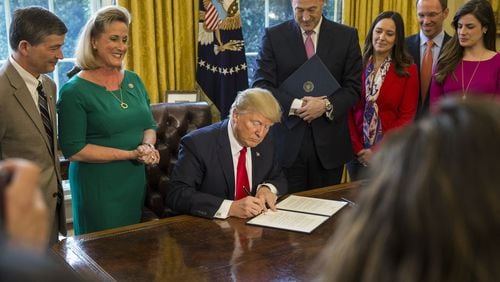President Donald Trump on Monday revoked a sweeping travel ban he issued in January and replaced it with a revised version that temporarily bars refugees from around the world as well as visitors from six Muslim-majority countries.
“The entry into the United States of foreign nationals who may commit, aid, or support acts of terrorism remains a matter of grave concern,” Trump’s new order says.
The ban, which takes effect starting at 12:01 a.m. on March 16, requires:
• A 90-day ban on travelers coming from six predominantly Muslim countries: Iran, Libya, Somalia, Sudan, Syria and Yemen. Iraq, which was originally on the banned list, has been taken off. The order also does not apply to travelers with valid visas and green cards or who have been granted asylum here.
• A 120-day pause for the refugee resettlement program. But Syrian refugees will not be indefinitely barred and there will be no exceptions for religious minorities – including Christians from Muslim majority countries –- as the original directive required. The halt to the resettlement program will not apply to refugees who were scheduled by the State Department for transit before March 16.
• A reduction to 50,000 in the number of refugees who may be resettled in the U.S. in the fiscal year ending in September, down from the 110,000 goal the Obama administration had set.
• A worldwide review to determine if other countries should provide additional information before visas will be issued to their residents.
• New uniform screening standards for all immigration programs.
• A study of existing law to determine how state and local officials may have greater involvement in the process of determining the placement refugees in their communities.
• The implementation of a biometric entry and exit tracking system for visitors to the United States.
About the Author







